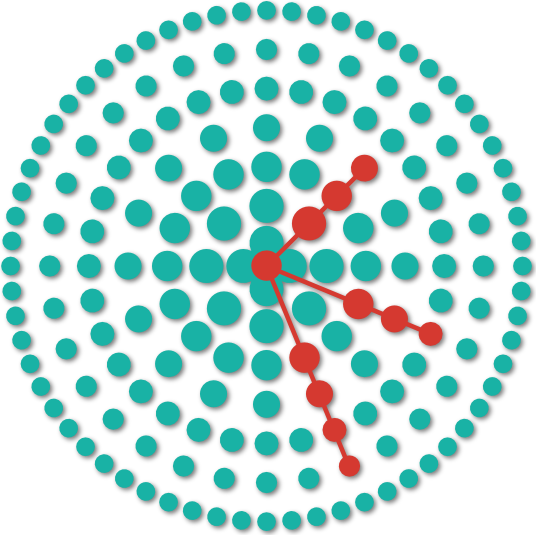Radiation Therapy for Glioma


Gliomas are common types of tumors of the brain and spinal cord. Gliomas can be relatively benign (non-cancerous) or malignant (cancerous). Even relatively benign gliomas can cause neurological deficits depending on where they are in the brain or spinal cord. Malignant gliomas are notoriously fast-growing. Gliomas can negatively impact your health-related quality of life, causing physical pain, personality changes, confusion, and memory loss. Options for treating gliomas include surgery, radiation, and medications including chemotherapy.
In many cases, surgery is the first choice of treatment. The neurosurgeon will attempt to remove as much of the tumor as possible without damaging healthy tissues. It is almost impossible to remove all of a glioma with surgery, which is why surgical intervention is often followed with radiation and chemotherapy. Radiation therapy targets the tumor, slowing their growth. Below, we will take a look at how radiation is used to treat gliomas, what treatment may look like, and what you can expect to experience in the long-term after radiation.
Types of Radiation
When you receive radiation therapy, a machine uses high-energy beams to target and kill tumor cells. This is called external beam radiation. These beams contain particles called photons, protons, and electrons. Here is what you need to know about these particles:
- Photons are powerful particles that can reach tumors that are located deep within your body. However, as they travel through your body, they may leave radiation particles behind that can potentially damage healthy tissue.
- Protons are particles that hold a positive charge. Like photons, they can travel deep within your body, but unlike photons, they are less likely to damage healthy tissue. The only drawback to proton radiation is that it is very expensive, and the machines used to deliver it take up a lot of space.
- Electrons are particles that hold a negative charge. Unlike photons and protons, electrons do not travel deeply into the body. They are used to treat tumors that are close to the surface of your body and are not often used to treat gliomas.

There are a few different types of external beam radiation that are used to treat many different tumors throughout the body. However, these are the ones that are most often used in the treatment of gliomas:
- 3-D conformal radiation therapy: This type of radiation therapy uses scans of your brain to map out precisely where the glioma is. A computer then analyzes the images that these brain scans produce to design specialized radiation beams that conform to the shape of your glioma. Beams are delivered from many different directions, delivering a high dose of radiation to your tumor while avoiding healthy tissue.
- Intensity-modulated radiation therapy (IMRT): This type of radiation therapy is very similar to 3-D conformal radiation therapy. It also uses scans to map out your tumor, but it uses smaller beams to target it. The intensity of these beams can be adjusted to deliver higher doses of radiation to certain parts of your glioma.
- Stereotactic radiosurgery: This type of radiation treatment uses targeted high-energy beams to treat small gliomas with well-defined edges. Your head is placed into a frame so it does not move during the procedure, then beams of radiation are delivered precisely to your tumor. The spot where the beams converge receives a large dose of radiation.
Your doctor will be able to determine what type of radiation is right for your specific glioma.
Why should you have your surgery with Dr. Cohen?
Dr. Cohen
- 7,500+ specialized surgeries performed by your chosen surgeon
- More personalized care
- Extensive experience = higher success rate and quicker recovery times
Major Health Centers
- No control over choosing the surgeon caring for you
- One-size-fits-all care
- Less specialization
For more reasons, please click here.
What Is Receiving Radiation Treatment Like?
Most people receive radiation as an outpatient. This means you receive radiation at a special facility, such as a comprehensive cancer center or hospital, and can go home afterwards without staying overnight. You will be able to lie down or sit while receiving treatment, and your doctor will ensure that you are comfortable.
While it is being administered, radiation therapy will not hurt, and the treatment will be completed within a few minutes to an hour. You simply need to relax and be as still as possible, so that the radiation is delivered to the proper area. Usually, people will receive treatment for several days, with a break for your body to rest and repair any damage caused by the radiation.
Side Effects After Brain Radiation
Radiation is an effective treatment for glioma. Treatment technology and methods have become much more advanced in the past few decades, minimizing post-radiation side effects. However, there are still a few side effects that you should be on the lookout for. The type of side effects you might experience will depend on the prescribed dose, schedule, and method of delivery. Here are some possible short and long term side effects.
Short-Term Side Effects After Radiation
Shortly after your radiation treatment, and in the weeks following, there are a few symptoms you might notice. Fatigue (feeling tired) after radiation is commonly experienced by many patients. Soreness may occur at the site of radiation or in the neck or back depending on the position and length of time you are required to remain still.
Changes in your skin or hair loss are also commonly encountered side effects. Since your head is being targeted with radiation, that is where you may notice peeling, itching, or darker patches on your skin. Fortunately, these side effects often disappear within a few days or weeks after your treatment is complete.
Long-Term Side Effects After Radiation
You may see changes in your body months or even years after your radiation treatment is complete. A few examples of possible long-term side effects include:
- Cataracts: If radiation therapy is near your eyes, you may experience cataracts (clouding of the lens of your eye). Cataracts can cause blurry vision and problems with visual tasks such as driving, especially in low light conditions and at night.
- Hearing loss: Hearing loss after radiation is often delayed. You may experience hearing loss if radiation therapy is delivered near the structures of the inner or middle ear or the nerves that help relay and interpret sound to your brain. Hearing loss may occur unilaterally (on one side) or bilaterally (on both sides). It may also occur in various frequencies, causing you to hear certain sounds (high or low pitches) differently than before.
- Memory loss: Memory loss is one of the most commonly reported side effect of radiation therapy to the brain; however, it is difficult to determine whether this memory loss is due to the underlying tumor or the radiation therapy itself. Nevertheless, memory loss may be gradual with occasional forgetfulness or more noticeable with greater impact to your everyday life.
Life After Radiation
It is important to remember that radiation therapy is considered safe and effective in treating gliomas. After receiving radiation therapy, you do not become radioactive, which is a common thought among patients and caregivers. After your radiation sessions, it is safe to be around other people, and you cannot pass on radiation to another person. While there is a potential to encounter side effects, life after radiation often involves resuming daily activities as tolerated.
Can Brain Tumors Come Back After Radiation?
Brain tumors can recur after radiation treatment. Treatment does not always eliminate tumors, even if it is shown to slow growth and recurrence. It may take months or even years for tumors to recur, if they recur at all. Your doctor will likely want to continue to monitor your progress with regular brain imaging (MRI), even after your radiation treatment is complete. This can help them detect glioma recurrence and establish a subsequent treatment plan without delay.











